No. 46 Improvement of aqueous solubility of Ursolic Acid with Cyclodextrin
This research was reported in 29th Cyclodextrin Symposium (Hoshi Univ., Tokyo, Sep. 6~7, 2012).
Background
Ursolic acid, a pentacyclic triterpenoid carboxylic acid, is the major component of many plants including apples, prunes, basil and rosemary and has been reported to possess many biological activities. In spite of its interesting characteristics, the usage of ursolic acid as a nutritional supplement has been limited by their poor water solubility. In this study, the solubilizing effects on ursolic acid with cyclodextrin (CD) were explored.
Ursolic acid
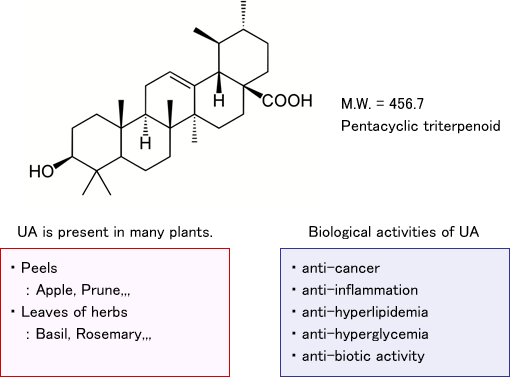
This study

UA has some problems : low aqueous solubility → low bioavailability
In this study, we explored the water solubility of UA with cyclodextrins for improvement of the its bioavailability.
- Preparation of UA-CD inclusion complexes. (DSC)
- Evaluation of aqueous solubility of UA-CD in the presence of bile acids. (HPLC)
Preparation of UA-CD complex
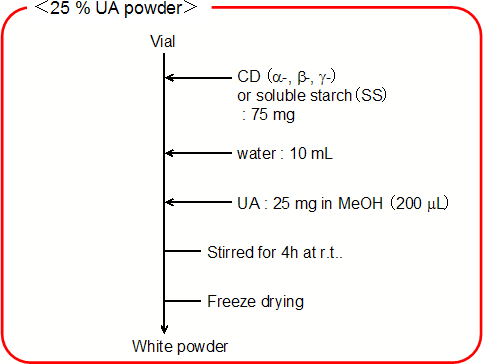
Fig. 1. UA-CD powder : DSC
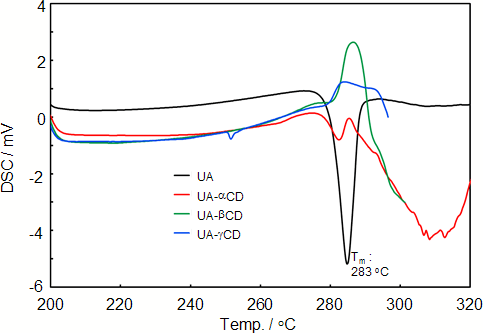
→ DSC peak of UA was not observed in the cases of UA-β-CD and UA-γ-CD.
UA-β-CD and UA-γ-CD were confirmed that they were inclusion complexes.
Effective solubilization of hydrophobic material from its inclusion complex with bile acid.
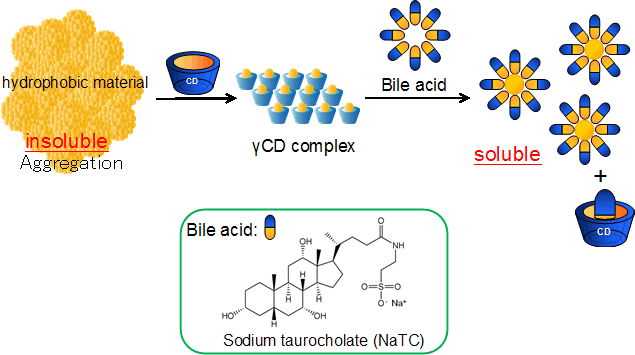
Fig. 2. Solubility of UA-CD complex in artificial intestinal juice
Method
- 10 mg of UA-CD was added to 2 mL of water or 1%NaTCaq (as artificial intestinal juice).
- Sonication for 15 mins.
- Filtration (0.2 mm) → HPLC
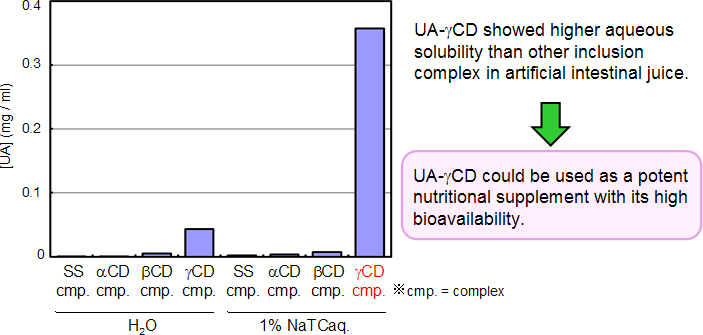
Conclusions
Improvement of aqueous solubility of Ursolic Acid with Cyclodextrin
- UA could be included in β-CD and γ-CD to form their inclusion complexes.
- UA-γ-CD complex was readily solubilized to artificial intestinal juice.
→ γ-CD has a possibility to increase of the bioavailability of UA in foods.
